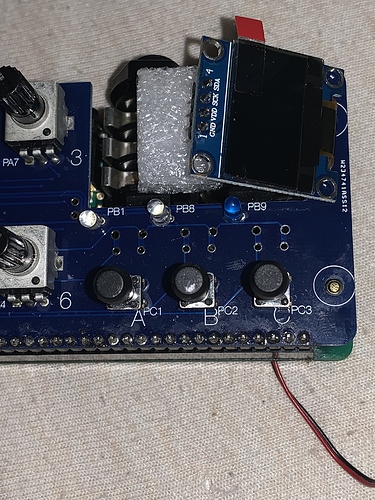So I got an axoloti core in january, and being a fairly basic dude I decided to snag one of the old Music Thing Modular axocontrol boards. I soldered it and attached it and it’s working great. Anyways I want to attach one of those .96 inch OLEDs.
So I’ve been doing quite a bit of looking back in threads, and I’ve gleaned that I’m going to want to attach the pins to vdd gnd pb8 and pb9.
Now from what I can tell those two points are routed to two LEDs on the old music modular board.
My question is, can I just like attach the OLED to those points while the LEDs are there via wire, and Jerry rigging a second connection off the axoloti board? Or will it only work if I disconnect the LEDs and use the pads from the control board?
Also will I have to solder any more resistors to protect the screen since there are 5 present on the music modular board to protect the LEDs? Thanks in advance

